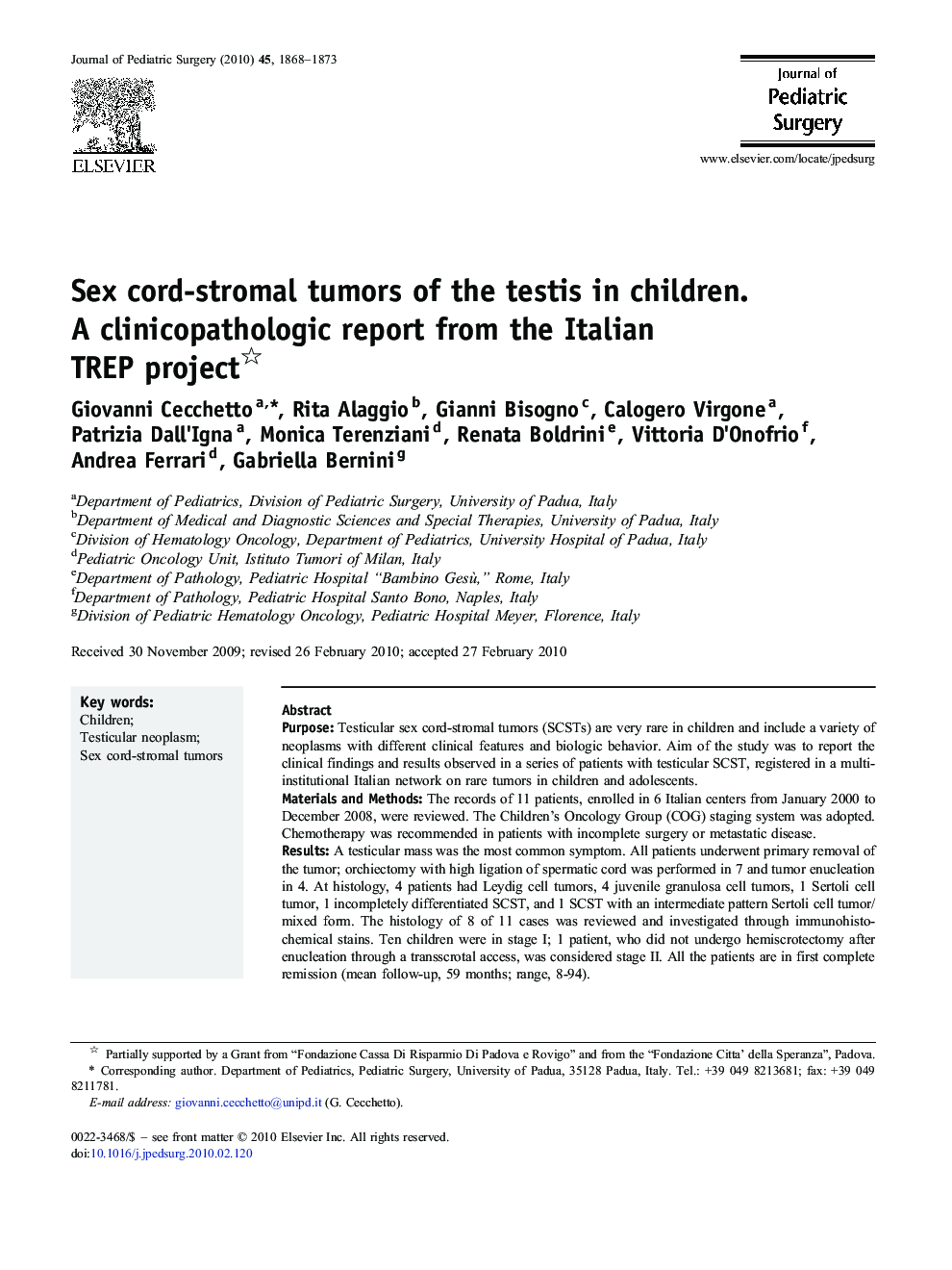| Article ID | Journal | Published Year | Pages | File Type |
|---|---|---|---|---|
| 4158379 | Journal of Pediatric Surgery | 2010 | 6 Pages |
PurposeTesticular sex cord-stromal tumors (SCSTs) are very rare in children and include a variety of neoplasms with different clinical features and biologic behavior. Aim of the study was to report the clinical findings and results observed in a series of patients with testicular SCST, registered in a multi-institutional Italian network on rare tumors in children and adolescents.Materials and MethodsThe records of 11 patients, enrolled in 6 Italian centers from January 2000 to December 2008, were reviewed. The Children's Oncology Group (COG) staging system was adopted. Chemotherapy was recommended in patients with incomplete surgery or metastatic disease.ResultsA testicular mass was the most common symptom. All patients underwent primary removal of the tumor; orchiectomy with high ligation of spermatic cord was performed in 7 and tumor enucleation in 4. At histology, 4 patients had Leydig cell tumors, 4 juvenile granulosa cell tumors, 1 Sertoli cell tumor, 1 incompletely differentiated SCST, and 1 SCST with an intermediate pattern Sertoli cell tumor/mixed form. The histology of 8 of 11 cases was reviewed and investigated through immunohistochemical stains. Ten children were in stage I; 1 patient, who did not undergo hemiscrotectomy after enucleation through a transscrotal access, was considered stage II. All the patients are in first complete remission (mean follow-up, 59 months; range, 8-94).ConclusionsOur experience confirmed the rarity of testicular SCST. They have to be considered in the differential diagnosis of testicular solid masses, taking into account that hormonal signs are present in a minority of cases. All patients were cured with surgery alone. The sparing surgery represented a choice in selected cases.
